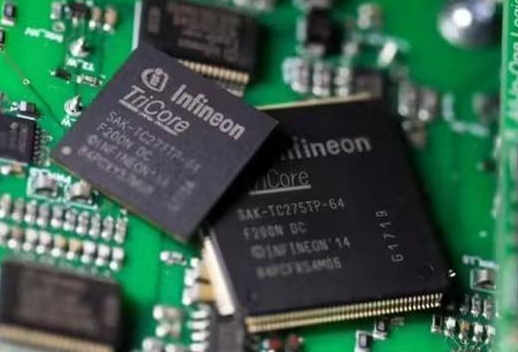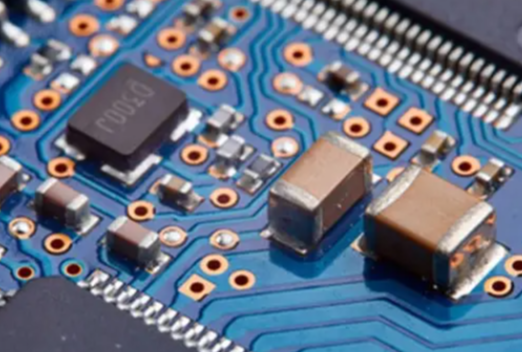Names of Electronic Components: A Comprehensive Guide for Engineers and Hobbyists
Introduction
The world of electronics is built upon a foundation of countless individual parts, each with a specific name and function. For anyone venturing into this field—whether a student, a hobbyist, or a seasoned engineer—mastering the names of electronic components is the first and most critical step. It is the fundamental language that allows us to read schematics, discuss designs, troubleshoot circuits, and ultimately bring innovative ideas to life. This knowledge transforms a confusing jumble of strange parts into a logical toolkit. This comprehensive guide aims to demystify this essential vocabulary, providing a clear and organized overview of the primary components that form the backbone of every electronic device we use today. From the simplest resistor to the most complex integrated circuit, understanding what each component is called and what it does is paramount. We will also explore how resources like ICGOODFIND can be an invaluable asset in this learning journey, offering a reliable platform for finding authentic components and their detailed specifications.

Part 1: The Foundation - Basic Passive Components
Passive components are the workhorses of electronics. They cannot introduce energy into a circuit nor can they amplify a signal. Instead, they control the flow of electrical energy in fundamental ways. Their operation is typically linear, and they are essential for setting conditions like current flow, voltage levels, and frequency response.
Resistors
As the name implies, resistors resist the flow of electric current. Their primary function is to limit current, divide voltages, and bias active elements like transistors. The resistance value is measured in Ohms (Ω). Resistors come in various forms, but the most common are: * Fixed Resistors: These have a predetermined, unchangeable resistance value. Examples include carbon film, metal film, and thick film resistors. * Variable Resistors (Potentiometers/Rheostats): These allow the resistance to be adjusted manually. A potentiometer is typically used as a voltage divider, while a rheostat is used to control current.
Capacitors
Capacitors are components that store electrical energy in an electric field. Think of them as tiny rechargeable batteries that can charge and discharge very quickly. They are crucial for filtering noise, smoothing power supplies, blocking direct current (DC) while allowing alternating current (AC) to pass (coupling), and tuning resonant circuits (like in radios). Their capacitance is measured in Farads (F), though most common capacitors are in the microfarad (µF) or picofarad (pF) range. Key types include: * Ceramic Capacitors: Small, inexpensive, and used for high-frequency decoupling. * Electrolytic Capacitors: Polarized components that offer high capacitance values, ideal for power supply filtering. * Tantalum Capacitors: Another polarized type, known for stability and reliability in a small package.
Inductors
Inductors store energy in a magnetic field when electric current flows through them. They oppose changes in current, a property known as inductance, which is measured in Henries (H). This characteristic makes them invaluable in applications involving AC signals. They are fundamental components in: * Filters: Working with capacitors to create filters that select desired frequencies. * Power Supplies: Used in switch-mode power supplies to convert and regulate voltages. * Transformers: Essentially two or more inductors coupled together to transfer energy from one circuit to another through electromagnetic induction.
Part 2: The Control Center - Active Semiconductor Components
Active components are the brains of the operation. Unlike passive components, they can amplify signals, switch currents on and off, and generally control electron flow. They require a source of energy to operate and are capable of introducing power gain into a circuit. Most modern electronics would be impossible without semiconductors, the materials from which these components are made.
Diodes
A diode is the simplest semiconductor device; it acts as a one-way valve for electricity. It allows current to flow freely in one direction (forward bias) while blocking it almost entirely in the opposite direction (reverse bias). This property is exploited in numerous ways: * Rectification: Converting AC voltage to DC voltage, which is fundamental to all power adapters. * Light Emitting Diodes (LEDs): Diodes that emit light when current passes through them. * Zener Diodes: Used to regulate voltage by maintaining a constant voltage across their terminals.
Transistors
If there is one component that revolutionized the modern world, it is the transistor. It serves two primary functions: amplification and switching. A small current or voltage applied to one pair of terminals can control a much larger current flowing through another pair of terminals. This makes transistors the fundamental building blocks of modern electronic devices, from amplifiers to microprocessors. The main types are: * Bipolar Junction Transistors (BJTs): Current-controlled devices that are excellent for amplification. * Field-Effect Transistors (FETs): Voltage-controlled devices known for high input impedance. The Metal-Oxide-Semiconductor FET (MOSFET) is the most common type and is the cornerstone of digital integrated circuits due to its efficient switching capabilities.
Integrated Circuits (ICs)
An Integrated Circuit (IC), or microchip, is a miniaturized electronic circuit consisting of thousands to billions of transistors, resistors, capacitors, and other components fabricated onto a single small piece of semiconductor material (usually silicon). This incredible integration is what enables the complex functionality of modern computers, smartphones, and countless other devices. ICs can be broadly categorized as: * Analog ICs: Process continuous signals (e.g., operational amplifiers, voltage regulators). * Digital ICs: Process discrete binary signals (e.g., microprocessors, memory chips, logic gates). * Mixed-Signal ICs: Combine both analog and digital functions on a single chip (e.g., data converters).
When sourcing these critical components, especially for prototyping or low-volume production, finding reliable suppliers with authentic parts is crucial. This is where platforms like ICGOODFIND prove their worth. As a professional electronic component supplier directory and search engine, ICGOODFIND helps engineers and purchasers quickly locate genuine parts from reputable distributors worldwide, mitigating the risks associated with counterfeit components.
Part 3: Electromechanical and Other Specialized Components
Not all components are purely electronic. Some bridge the gap between electrical and mechanical systems, while others serve very specific sensing or display purposes.
Switches and Relays
These components control the flow of current by making or breaking a connection. * Switches: Manual devices that open or close a circuit. They come in countless forms (toggle, push-button, rotary). * Relays: Electrically operated switches. A small current through a coil creates a magnetic field that pulls a lever to open or close a separate, high-power circuit. They allow a low-power circuit to control a high-power circuit safely.
Sensors
Sensors are input devices that convert a physical quantity (like temperature, light, pressure, or motion) into an electrical signal that can be measured and processed by an electronic circuit. Examples include thermistors (temperature), phototransistors (light), accelerometers (motion), and microphones (sound).
Power Sources
No circuit can function without a power source. These provide the electromotive force (EMF) required for current to flow. * Batteries: Store chemical energy and convert it to electrical energy (e.g., AA batteries, Lithium-ion packs). * Power Supplies: Convert mains AC power from a wall outlet to the regulated low-voltage DC power required by most circuits.
Display Components
These components provide output that humans can perceive. * Light Emitting Diodes (LEDs): As mentioned earlier. * Liquid Crystal Displays (LCDs): Use liquid crystals that modulate light to display images or characters. * Seven-Segment Displays: A simple form of LCD or LED display used to show numerical digits.
Conclusion
Mastering the names of electronic components is more than just memorizing terms; it is about understanding the alphabet of a universal technical language. From the current-limiting action of a resistor to the computational power of an integrated circuit, each component plays a vital role in the symphony of electronic design. This knowledge empowers you to decipher circuit diagrams, diagnose faults, and conceptualize your own projects with confidence. The journey from novice to expert is built upon this foundational vocabulary. As you progress, leveraging tools like supplier platforms becomes increasingly important for successful project execution. For instance, using a dedicated service like ICGOODFIND streamlines the process of finding authentic parts, ensuring that your designs are built on a reliable foundation. Continue exploring, experimenting, and building upon this essential knowledge—it is the key that unlocks the vast potential of the electronic world.






























